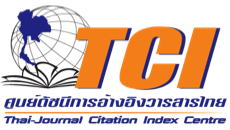Efficiency of Cardiac Rehabilitation Program in Post Percutaneous Coronary Intervention Patients
Keywords:
CAD, PCI, Cardiac Rehabilitation Program,, 6MWT, ADLAbstract
ABSTRACT
Background: Coronary artery disease: CAD s/p Percutaneous Coronary Intervention: PCI do not
use Activity Daily Living: ADL because fear anxiety and belief that not coming to ADL or exercise, get
decrease functional capacity and increase burden to caregiver. CAD patients receive Cardiac Rehabilitation
Program together with education and recommendation practice before discharge from hospital
should make increase functional capacity and ADL.
Objective: This action research aims to comparison functional capacity inhospital and immediate outpatient
phase before and after used Cardiac Rehabilitation Program.
Methods: CAD patients to Coronary Care Unit and pre-post CAG Unit was carried out from
October 2017 to December 2017 95 CAD patients (control group) and January 2018 to March 2018
95 CAD patients (Intervention group) get routine nursing care and Cardiac Rehabilitation Program.
The data were analyzes using frequency, mean, percentage and adjust the differences include age,
gender, BMI and LVEF by multivariable regression.
Results: There were CAD patients get Cardiac Rehabilitation Program increase distance in 6 minute
(6MWT) inhospital and immediate outpatient phase 81.8±0.9 and 117.6±1.2 meters more than control
group 70.5±0.9 and 70.7±1.2 meters (p<0.001), then adjust the differences as described above, Cardiac
Rehabilitation Program increase 6MWT 11.3 and 46.9 meters (p<0.001).

Conclusion: CAD patients without prohibition should be get Cardiac Rehabilitation Program should
make increase functional capacity and ADL Inhospital and Immediate Outpatient phase.
Keywords: CAD, PCI, Cardiac Rehabilitation Program, 6MWT, ADL
References
ข้อมูล 2 กุมภาพันธ์ 2558 เข้าถึงได้จาก http://www.thaiheart.org/images/column_1291454908/RehabGuideline.pdf
2. เกรียงไกร เฮงรัศมี. มาตรฐานการดูแลและการส่งต่อผู้ป่วยโรคกล้ามเนื้อหัวใจตายเฉียบพลัน. กรุงเทพมหานคร: บริษัทสุขุมวิท
การพิมพ์ จำกัด, 2555.
3. เกรียงไกร เฮงรัศมี. มาตรฐานการรักษาผู้ป่วยกล้ามเนื้อหัวใจขาดเลือดเฉียบพลันสถาบันโรคทรวงอก(ออนไลน์) 2555 (อ้างอิง
ธันวาคม 2556) แหล่งที่มา http://www.cdi.thaigov.net/cdi/folder_a/folder_f/1aa.pdf.
4. สุดคะนึง ดารานิษร, พิกุล บุญช่วง, นิตยา ภิญโญคำ.ผลของโปรแกรมการดูและระยะเปลี่ยน ผ่านต่อพฤติกรรมสุขภาพและ
ความสามารถในการทำหน้าที่ของร่างกายผู้ป่วยโรคหลอดเลือดหัวใจ เฉียบพลัน. พยาบาลสาร, 2556; 40(2): 103-13.
5. ศิริวรรณ เจิมขุนทด, มนสภรณ์ วิทูรเมธา, อำภาพร พัววิไล. ผลของโปรแกรมการฟื้นฟู สมรรถภาพหัวใจในระยะที่ 1 ต่อ
ความรู้ในการดูแลตนเองและความสามารถในการทำกิจวัตรประจำวันของผู้ป่วยกล้ามเนื้อหัวใจตาย. วารสารพยาบาลโรคหัวใจ
และทรวงอก, 2551; 19: 40-50.
6. Guidelines for cardiac rehabilitation and secondary prevention programs, Human Kinetics Publishe r3rd
edition. 1999; 39-52.
7. Pashkow FJ, Dafoe WA: Clinical cardiac rehabilitation-A Cardiologist’s guide 2nd edition :Baltimore; Williams@
Wilkins. 1999; 458-466.
8. Goble AJ. Worcester MUC. Best Practice guide lines for cardiac rehabilitation and Secondary prevention,
1st edition. Melbourne. Department of Human Services. 1999; 52-6.
9. สุรพันธ์ สิทธิสุข. แนวทางเวชปฏิบัติในการดูแลผู้ป่วยโรคหัวใจขาดเลือดในประเทศไทย ฉบับปรับปรุง (พิมพ์ครั้งที่ 2).
กรุงเทพฯ: สมาคมแพทย์โรคหัวใจแห่งประเทศไทยในพระบรมราชูปถัมภ์, 2557.
10. American Association of Cardiovascular and Pulmonary Rehabilitation. Guidelines for cardiac rehabilitation
and secondary prevention programs 4th edition. Champaign, IL: Human Kinetics. 2004; 53-74.
11. คณะกรรมการชมรมฟื้นฟูหัวใจ. แนวทางการฟื้นฟู สภาพในผู้ป่วยโรคหัวใจ 2553. [อินเตอร์เนต] [เข้าถึงเมื่อ 11 ธ.ค. 2557].
เข้าถึงได้จาก: http://www.thaiheart.org/images/ column_1291454908/RehabGuideline.pdf
Downloads
Published
How to Cite
Issue
Section
License

This work is licensed under a Creative Commons Attribution-NonCommercial-NoDerivatives 4.0 International License.
The names and email addresses entered in this journal site will be used exclusively for the stated purposes of this journal and will not be made available for any other purpose or to any other party.











